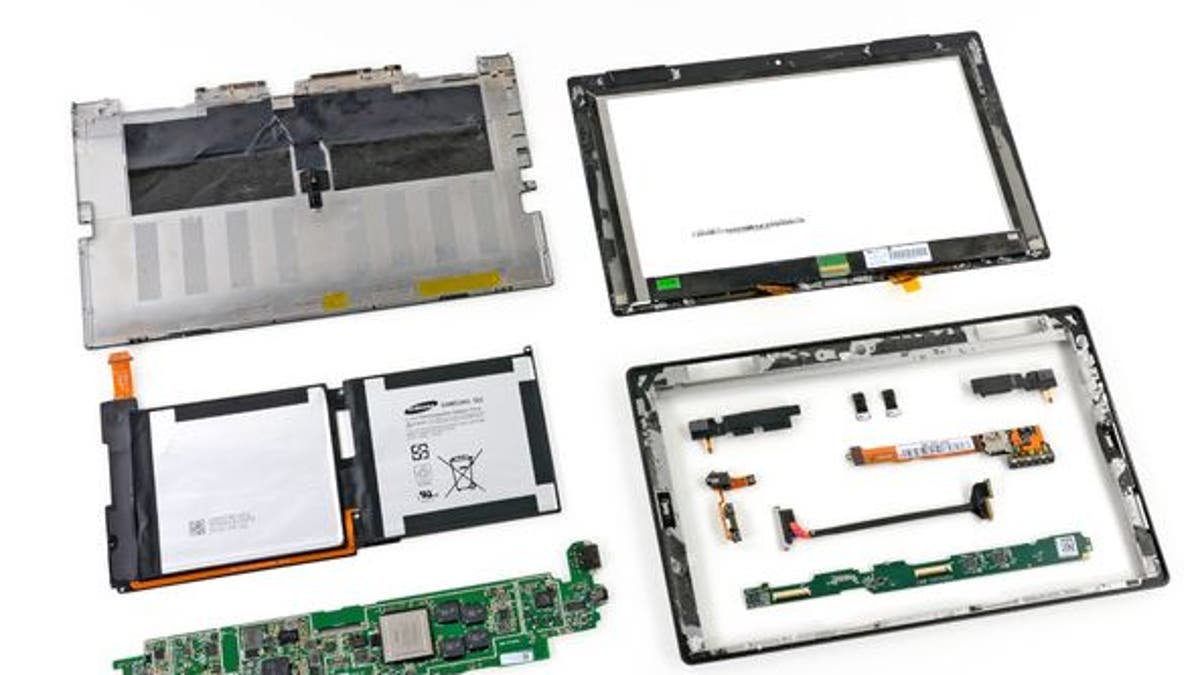
The Microsoft Surface's exterior might be a model of sleek industrial design, but everyone knows that it's what's inside that counts -- especially if something happens to break and needs to be swapped out. So does Redmond's tablet more closely resemble the completely upgradeable PCs of Windows' past or the difficult-to-repair iPad that the Surface is so desperately gunning for? The gadget gurus at iFixit tore one apart to find out.
After spending an hour and a half figuring out how to pry the plastic rear panel off the tablet to gain access to the interior, the team found the Surface slightly more repair-friendly than the iPad 3. The biggest boon proved to be the Surface's modular audio components, camera and battery. All can be swapped out with relative ease, though you'll need to bring a smudger to remove the glue Microsoft used to secure the components to the tablet. (Don't worry; iFixit says the Surface glue isn't anywhere near as impossible as the iPad's Herculean adhesive.)
Fixing other components will be more of an ordeal, unfortunately. The LCD and glass layers are fused together, which means you'll pretty much have to replace both if either breaks. Prying the display out of the Surface's casing won't be easy, either. "You'll have to use a heat gun and lots of patience to gain access to the glass and LCD," iFixit reports.
That's a problem if your Touch Cover short circuits: The only way to access the keyboard connector is by first removing that difficult-to-remove display.
Why does the Surface's 4 out of 10 repairability score matter to people who will never handle a smudger, Torx screwdriver and heat gun in their lives? Simple: the more difficult a component is to remove, the more you'll have to pay somebody to fix it if it breaks.
By comparison, iFixit assigned the Google Nexus 7 and Amazon Kindle Fire repairability scores of 7 and 8, respectively, while the iPad 3 received a 2 rating. When it comes to tablets, it seems as though mo' money spent means mo' problems found when they falter.
